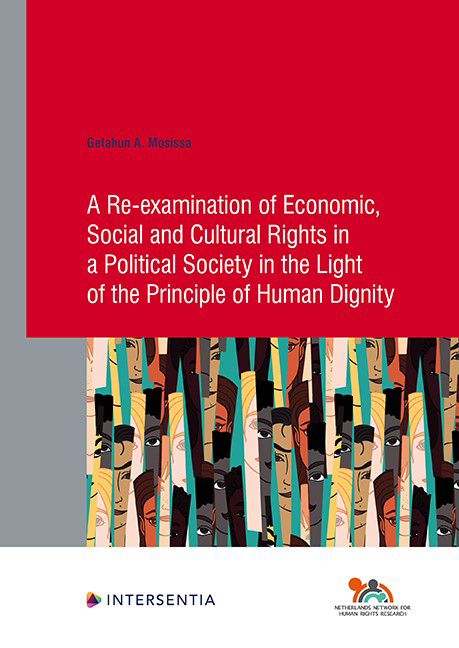Book contents
- Frontmatter
- Acknowledgments
- Dedication
- Contents
- Acronyms
- Chapter 1 General Introduction
- PART ONE THE CONCEPTIONS AND THEORIES OF HUMAN RIGHTS
- PART TWO THE LEGAL OBLIGATIONS OF THE STATE UNDER ESC RIGHTS IN THE LIGHT OF INTERNATIONAL ESC RIGHTS JURISPRUDENCE
- Bibliography
- Samenvatting
- Curriculum Vitae
- Human Rights Research Series
Chapter 9 - Equality, Non-Discrimination and the Protection of Vulnerable Persons
Published online by Cambridge University Press: 25 May 2021
- Frontmatter
- Acknowledgments
- Dedication
- Contents
- Acronyms
- Chapter 1 General Introduction
- PART ONE THE CONCEPTIONS AND THEORIES OF HUMAN RIGHTS
- PART TWO THE LEGAL OBLIGATIONS OF THE STATE UNDER ESC RIGHTS IN THE LIGHT OF INTERNATIONAL ESC RIGHTS JURISPRUDENCE
- Bibliography
- Samenvatting
- Curriculum Vitae
- Human Rights Research Series
Summary
INTRODUCTION
As it was seen in Chapter four, the principle of human dignity signifies an unconditional respect for the inherent life and value of human being. It accordingly proscribes any form of hierarchical or discriminatory treatment of human beings both generally and in relation to the realisation of the essential material conditions of life. In particular, it requires that a special attention be given to the socioeconomic needs of vulnerable persons in a society. It was also seen that international human rights law compels the States to respect and ensure to ensure the free, full and effective enjoyment of all human rights for everyone within their jurisdiction. This implies that the States are required to guarantee the rights on the basis of the principle of equality and nondiscrimination. The principles of equality and non-discrimination have special significance particularly in ensuring the ESC rights of vulnerable persons both in their procedural and substantive aspects. We have already considered above their procedural aspects in connection with the procedural dimensions of the protection of ESC rights (Chapters five through seven). And some of their substantive imports were also considered, though indirectly, while discussing the right to dignified life in Chapter 8 above. The purpose of this Chapter is now to provide a detailed examination of international ESC rights jurisprudence with the view to see their specific substantive implications in understanding (the scope of) the obligation of the State in the realisation of the essential material condition of life of the vulnerable persons. But before discussing this, it is necessary to first clarify the sense in which the notion of equality and non-discrimination and vulnerable persons are deployed in ESC rights case law.
THE CONCEPTION OF EQUALITY AND NONDISCRIMINATION
As it can be seen from the discussion below, the notions and implications of equality and non-discrimination have significantly expanded over the course of time. In my view, this interesting development can be justified as an accurate understanding (reflection) of the nature and implications of the underlying principle of human dignity.
- Type
- Chapter
- Information
- A Re-examination of Economic, Social and Cultural Rights in a Political Society in the Light of the Principle of Human Dignity , pp. 259 - 294Publisher: IntersentiaPrint publication year: 2020



